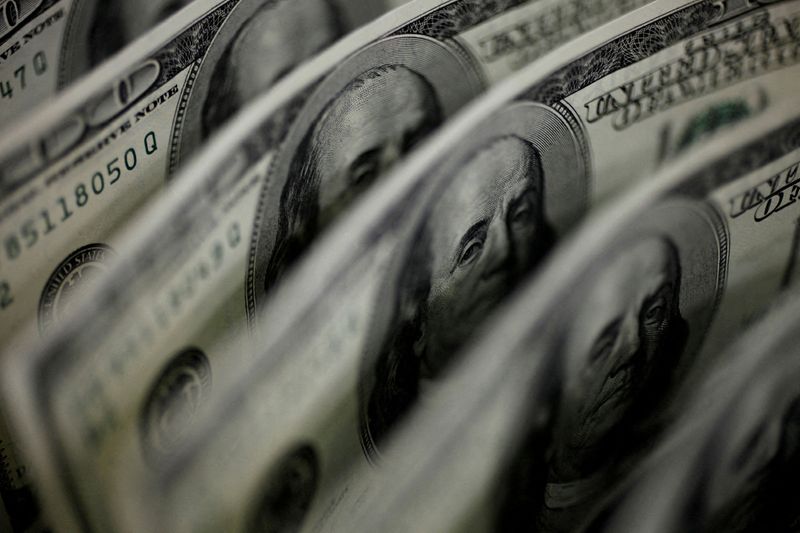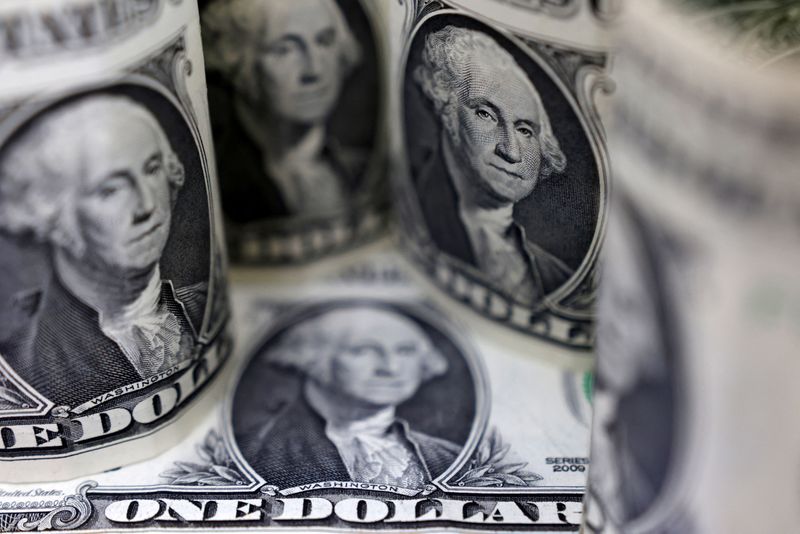By Jamie McGeever
ORLANDO, Florida (Reuters) – After two decades of gradually shrinking the dollar’s share of global foreign exchange reserves to less than 60%, economic, financial and geopolitical stars are joining forces to halt that trend in the coming years and possibly even to turn around.
At least temporarily.
This is evident from an annual survey of central banks and reserve managers conducted by the Official Monetary and Financial Institutions Forum, which is in line with recent research and analysis from leading figures in the world of foreign exchange reserves.
The rise of the euro and China’s explosive rise to the world’s second-largest economy have diminished the dollar’s currency reserve status, and a continued desire for diversification is likely to ensure that the dollar will never be as omnipotent again. are.
But according to OMFIF’s ‘Global Public Investor 2024’ survey of 73 central banks responsible for managing $5.4 trillion in reserves, a net 18% of reserve managers plan to reduce their dollar holdings over the next 12 to 24 months to increase.
That is two and a half times more than the next highest currency, the euro, to which a net 7% of respondents plan to increase exposure.
Perhaps more importantly, it is three times higher than the net 6% from last year’s survey who said they would increase their share of the dollar. That is a hugely positive change in sentiment.
DISTANT LAGGARDS
The dollar continues to enjoy overwhelming dominance in international trade, invoicing and financing flows, and US debt markets offer a depth of liquidity that no market in the world comes close to.
OMFIF’s ‘Global Public Investor 2024’ survey shows that 27% of reserve managers say their main investment objective this year is to ensure liquidity, compared to 20% last year.
Moreover, cyclical factors are increasingly playing in the dollar’s favor: US economic growth and returns relative to global peers are high and appear likely to remain so in the coming years.
This would signal a shift in central bank thinking. In a May 29 note, economists at the New York Fed said that relative Treasury yields have not been a significant factor in the dollar’s share of official reserves.
What the OMFIF survey, the New York Fed and other analyzes all point to is the increase in global geopolitical tensions and the need for liquidity, which will attract reserve managers to the dollar more than any other currency.
“For the share of the dollar to fall, the share of another currency must rise. Then you have to wonder which one? Which of the other is a truly global currency,” said Hiro Ito, professor of economics at Portland State University and a renowned authority. on global currency reserves and capital flows.
“The dominance of the dollar is so strong. There is no most powerful second coin, and certainly no most powerful third, fourth or fifth coin,” he says.
SANCTIONS
While the debate over the status of the dollar’s currency reserves is often combined with doomsday scenarios about the collapse of the US currency and economy, much less is said about the euro’s inability to benefit from the gradual erosion of the dominance of the dollars.
According to the International Monetary Fund’s Composition of Official Foreign Exchange Reserves (Cofer) data, the euro’s share of the $12 trillion total was just under 20% last year, right where it was in 2015 and well below its peak from 28% in 2009.
Geopolitics must also attract the attention of the central banks here.
The freezing of Russian assets and sanctions against Russia after it invaded Ukraine will have more impact on the euro than on the dollar. Moscow had sold all its US government bonds before the invasion and significantly reduced the dollar’s share of currency reserves, and most of Russia’s money abroad is in Europe, not the United States.
And if freezing Chinese assets abroad is a possibility, will countries in Asia – or anywhere else – want to be exposed to the renminbi? That’s before China’s capital controls are even taken into account.
SMALL COHORT, BIG IMPACT
A March article by the New York Fed found that countries that are more politically distant from the United States, and where they are more likely to be subject to financial sanctions, tend to have a higher share of the dollar in official reserves , while everything else remains the same.
It is countries that already have large reserves, well in excess of emergency liquidity needs and that already have a high dollar share, that are more likely to divest their dollars on geopolitical grounds.
According to the March study, the seven percentage point decline in the dollar’s share of global reserves between 2015 and 2021 was driven by a small group of countries – mainly China, India, Russia and Turkey – and the large increase in Swiss euro reserves that accumulated. via FX intervention.

“It is therefore not the case that countries are moving away from dollars en masse,” they write, adding that of the 55 countries for which estimates exist, 31 increased the dollar’s share of reserves over that period.
(The views expressed here are those of the author, a columnist for Reuters.)
(by Jamie McGeever; editing by Andrea Ricci)


